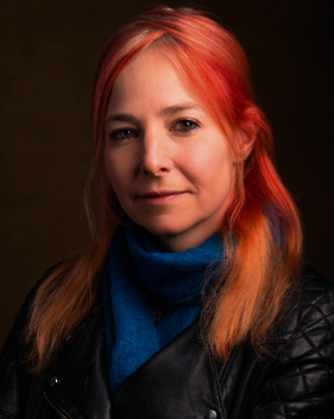PODCASTS
Art of darkness

Our podcast editor Ellie Cawthorne discusses a recent episode exploring the creation of rock art dating back tens of thousands of years – and what it meant to those who made it
Every issue we highlight a recent edition of our podcast. You can find it along with more than 1,500 previous episodes at our website: historyextra.com/podcast

Imagine the scene: shapes shift in flickering firelight, surrounded by pitch-black darkness. Water drips down cold cave walls. A figure holds up a hand and spits red pigment, spraying flecks across the rock to create a near-perfect outline of a palm and five fingers. The mark is repeated across the wall.
This scene, or something similar, played out more than 64,000 years ago in a cavern in what’s now Spain. And the handprints those Neanderthals (yes, they made art too) created still survive today, all these millennia later.
Prehistory can often feel incredibly distant – in terms of source material, it’s the darkest recess of our past. But something that can bring us closer to humanity in its earliest years is Palaeolithic cave art.
When Paul Pettitt, author of Homo Sapiens Rediscovered, joined us on the podcast, he encouraged listeners to look at these evocative and often surprisingly accomplished paintings as their creators may have seen them. “Palaeolithic people would have experienced this art in a very different way from us,” said Pettitt. “Today we mainly see it as still images reproduced in books, but we have to think of it as a form of installation art. Flickering light would have created shadows and a sense of movement. For a Palaeolithic viewer, I think this is all part of a mysterious journey into the depths of the Earth. In some caves, it seems to have been a very personal, almost private process – one individual communing with the darkness,” he added. “But in others – like Lascaux, Chauvet or El Castillo – we have grand compositions that certainly seem to have been a communal act.”
One of the most tantalising questions Pettitt tackled was why early humans created these artworks, which were once probably scattered across landscapes but now survive only deep in cave networks. Theories have ranged from them being “art for art’s sake” to the products of visions from altered states of consciousness. But, Pettitt stressed, many of these umbrella theories are now outdated.
Prey animals are overwhelmingly the most common motifs. Were they painted to ensure a successful hunt – or to give thanks for one? “I would certainly say it’s a celebration of creation,” said Pettitt. “Animals are often placed as if they’re dripping out of the ceiling. It seems to me that caves were thought of as places where animals or their spirits entered into the world – so creating these artworks was a form of midwifery.”
LISTEN NOW
You can hear this episode at historyextra.com/cave-art-qa
THREE HISTORY EXTRA PODCASTS EXPLORING BRITISH PREHISTORY

Ancient aromas
What did prehistoric Britain smell like? To give us an insight, Francis Pryor took listeners on a sensory tour. “I want to get inside the heads of people in the prehistoric past,” Pryor told us. “What were they thinking when they visited Stonehenge, built their houses or milked their cows? People tend to patronise the past – they think prehistoric people were simple. But the breadth of their experience was a great deal wider than you might imagine.”
historyextra.com/prehistoric-mind

Grave concerns
In uncovering the story of prehistoric Britain, among the most valuable sources available to us are burial sites. Broadcaster and biological anthropologist Professor Alice Roberts joined us to discuss her book Buried, which examines seven of these prehistoric “time capsules” – from a mysterious palaeolithic “Red Lady” (who turned out to be a man), found in a coastal cave, to an Iron Age chariot burial.
historyextra.com/archaeology-alice

Circular arguments
Stonehenge encapsulates some of the most enduring mysteries of prehistoric Britain. Why was it built? How was it built? And why did makers lug colossal bluestones all the way from west Wales to create it? Mike Pitts tackled these questions and more for our Everything You Wanted to Know series. There were so many mysteries to explore that it spanned two episodes!